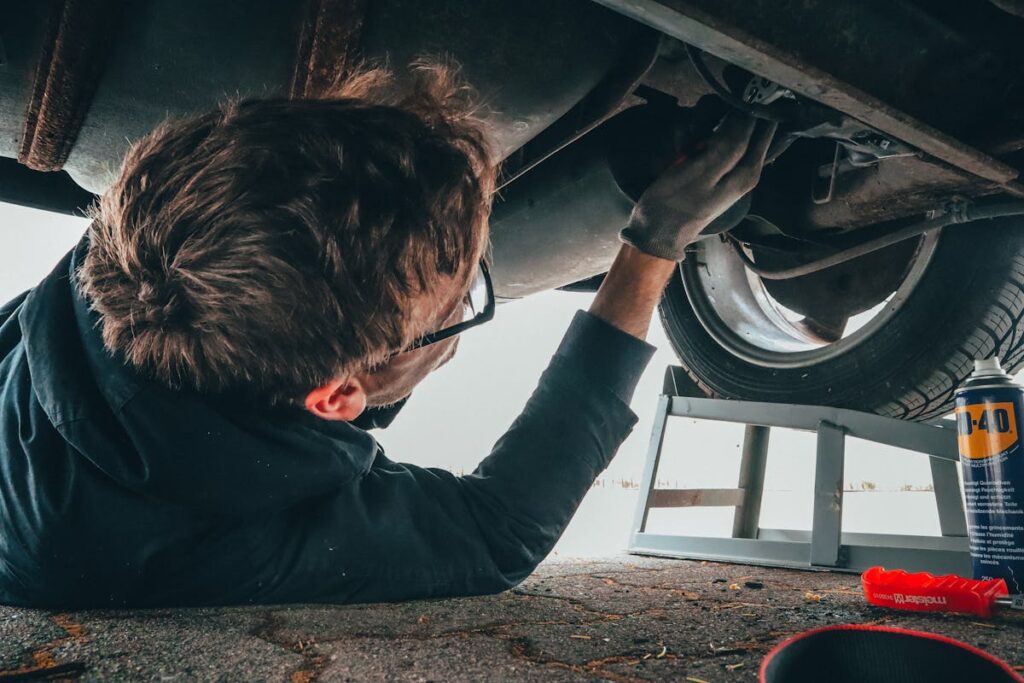Picture Supply: https://www.pexels.com/photo/mercedes-benz-parked-in-a-row-164634/
Auto insurance is a vital part of owning and operating a vehicle. Whether you’re a first-time buyer or a seasoned driver, understanding what your auto insurance policy covers can help you make better decisions and ensure you’re adequately protected. varied types of coverage give varied degrees of protection, so auto insurance policies are not one-size-fits-all. In this blog, we’ll break down the most common components of auto insurance so you can better understand what’s covered, why it’s important, and how it can impact your overall safety and financial security.
1. Liability Coverage
Liability insurance is the foundation of any auto insurance policy and is required by law in most states. Its two primary components are liability for personal injury and liability for property damage.
Bodily Injury Liability: This pays for other people’s medical bills if they are hurt in an accident you caused. It can also help pay for lost wages and legal fees if you’re sued by the other party. The limits of bodily injury liability will vary depending on your policy, and higher limits usually mean higher premiums.
Property Damage Liability: This covers the price of fixing someone else’s car or property that you cause damage to in an accident. For example, if you hit a fence or a parked car, this coverage would pay for the repair costs.
Because it protects you financially in the event that you are at fault in an accident, liability coverage is essential. If you don’t have coverage, you might have to pay a lot of money out of pocket for things like medical bills, property repairs, and legal fees.
2. Collision Coverage
Collision coverage is intended to cover damage to your own vehicle in the case of an accident, regardless of who is at fault. For instance, collision insurance will pay for repairs or, in the event that the automobile is declared a total loss, the replacement value of your vehicle if you collide with a tree, another vehicle, or a guardrail.
While collision coverage isn’t required by law, it’s often required by lenders if you’re financing or leasing a vehicle. It’s worth considering if you own a newer or more valuable car, as repair costs can quickly add up.

3. Comprehensive Coverage
Comprehensive coverage shields your vehicle from events other than collisions, like theft, vandalism, fire, natural catastrophes, and collisions with animals. For example, if your car is damaged by a hailstorm or stolen from your driveway, comprehensive coverage would help pay for the repair or replacement costs.
Like collision coverage, comprehensive insurance isn’t required by law but may be mandatory if you’re leasing or financing your vehicle. Additionally, it’s a smart move for drivers who reside in regions with higher chances of theft or severe weather.
4. Uninsured/Underinsured Motorist Coverage
The purpose of underinsured motorist coverage (UM/UIM) is to protect you in the event that you are in an accident with a driver who is either totally uninsured or whose insurance is insufficient to pay for your damages.
Uninsured Motorist Coverage (UM): This comes into play if you’re hit by a driver who has no insurance. It can assist with missed pay, auto repairs, and medical expenses.
Underinsured Motorist Coverage (UIM): If the at-fault motorist has insurance, but their coverage limits are insufficient to cover your damages or medical bills, this can be helpful.
In many states, drivers are legally required to carry some form of uninsured motorist coverage, but even if it’s not mandatory in your state, it’s wise to include it in your policy to protect yourself from drivers who are inadequately insured.
5. Medical Payments Coverage (MedPay) and Personal Injury Protection (PIP)
Regardless of who is at blame, (MedPay) and personal injury protection (PIP) are forms of coverage that cover post-accident medical costs.
Medical Payments Coverage (MedPay): This is a relatively straightforward policy that helps pay for medical bills resulting from a car accident. MedPay typically covers hospital visits, doctor’s fees, surgeries, and other related medical expenses.

Personal Injury Protection (PIP): Often available in no-fault insurance states, PIP is broader than MedPay and covers medical bills, lost wages, funeral costs, and even services like child care or house cleaning if you’re unable to perform them due to injuries.
Both MedPay and PIP are particularly helpful if you don’t have health insurance or are concerned about high out-of-pocket medical expenses following an accident.
6. Roadside Assistance and Towing Coverage
While not a mandatory part of your auto insurance policy, roadside assistance and towing coverage can be added for extra peace of mind. This coverage helps if you break down, get a flat tire, need a tow, or find yourself locked out of your car. Some policies even cover services like fuel delivery or jump-starting your car battery.
Roadside assistance is particularly useful for long road trips or if you’re worried about being stuck in an unfamiliar area.
7. Rental Reimbursement Coverage
If your car is being repaired due to an accident or another covered incident, rental reimbursement helps pay for a rental car while your vehicle is out of commission. This is especially helpful if you rely on your car daily and don’t have a backup vehicle. It’s typically a small additional charge to your policy but can save you from the cost of renting a car during repairs.
8. Glass Coverage
Glass coverage is designed to cover the cost of repairs or replacement of your windshield or windows if they are cracked or shattered in an accident, weather-related event, or other incidents. Some policies also cover damage to other glass surfaces, such as mirrors or sunroofs.
This type of coverage is often inexpensive and can be a worthwhile addition to ensure you’re protected from common but costly damages.
To make sure you’re sufficiently covered in the event of an accident or other unanticipated circumstance, it’s critical to comprehend what your auto insurance actually covers. The majority of auto insurance plans contain liability, collision, and comprehensive coverage, though the specifics will vary based on your policy and region. For added security, you can also choose to include coverage for medical bills, roadside assistance, and rental reimbursement.
Before purchasing or renewing your auto insurance, take the time to review the specifics of each coverage option and assess your needs. It’s also important to regularly evaluate your policy to ensure it still aligns with your lifestyle and the value of your car. You may rest easy knowing you’re covered financially no matter what the road throws at you if you know what your auto insurance covers.

Leave a Reply